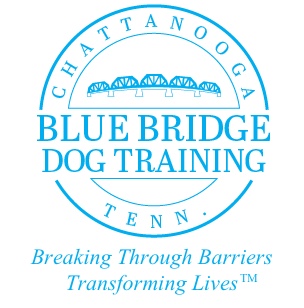Canine News You Can Use
What is off-leash control and why is it important?

So, what is off-leash control and why is it important? Here’s how I define off-leash control:
Off-leash control is the ability of a dog to reliably respond to commands (or implied commands) while wearing only a collar (or no collar, which is sometimes referred to as “naked”).
Notice that I did not mention anything about the location. Sometimes off-leash control is thought of in terms of circumstances that are not realistic for or desired by most people: Exotic vacations in the wilderness with their dog, hiking and camping in the backcountry (kind of like the photo of the good looking aussie, lying on a rock in the mountains). But practically speaking, off-leash control is needed whenever you do not have a leash on your dog. Do you always have leash on your dog? Probably not. Is it possible for your dog to become off-leash unintentionally? Sure. Here are a few other questions with examples that can help demonstrate the point:
Do you need off-leash control in your house? Yes.
Example 1: Your dog will go to his bed on command when a visitor arrives.
Example 2: Your dog will not bolt through an open door.
Do you need off-leash control on your property (fenced or not)? Yes.
Example: Your dog will come into the house when called.
Do you need off-leash control if you take your dog on vacation? Yes.
Example: You are able to play with your dog (and exercise him) on small areas of grass in an RV park without him running away.
Do you want your dog to have freedom to run, play, and explore? Yes.
Example: Playing frisbee or fetch with a ball in a large, open field.
So, what do we need to teach our dogs for off-leash control? The most obvious and easily recognizable off-leash command is “come.” The typical commands such as sit, down, stay, and wait can be used in off-leash situations, but here are a couple of more advanced commands or obedience behaviors that are important as well.
Distance Down: Your dog will lie down on command from a distance.
Importance: Safety.
Example: You are separated from your dog by a bike path with bikes coming from both directions. Your dog is running toward you and you give the down command. He stays lying down until the path is clear and you release him.
Hold up, This way, Let’s go: Your dog will stop, turn, or move forward on command. These are not technically advanced commands, but performing them at a distance is more difficult and requires additional training.
Importance: Following your lead and Safety.
Example: If there is something that you do not want your dog to encounter (person, dog, deer) and it is not an emergency situation, these commands are appropriate. The come command would be used if there was more urgency.
Boundaries (obedience behavior/implied command): Your dog will not cross a specified boundary (commonly a curb or where the grass and street meet).
Importance: Safety.
Example: When playing fetch with your dog, the ball bounces into the street, but he waits in the grass for you to retrieve it.
In this short video, my Assistant Trainer-In-Training, Caido, demonstrates the results of boundary training and the distance down.
Off-leash control is a key component for the health and safety of any dog. It also helps to build a strong bond and trusting relationship. This quote from Don Sullivan summarizes off-leash control quite nicely:
“There’s a world of difference between a dog that’s off a leash, and a dog that’s trained to be off a leash.” The Dogfather
Do you have comments or questions? Let us know on Facebook: What is off-leash control and why is it important?
Automatically get notified of our blog updates and other stuff by signing up here: Subscribe Now (as a special bonus, you will also receive access to the “Wait Command Video” and a downloadable poster)
Breaking Through Barriers, Transforming Lives...
Jeff
